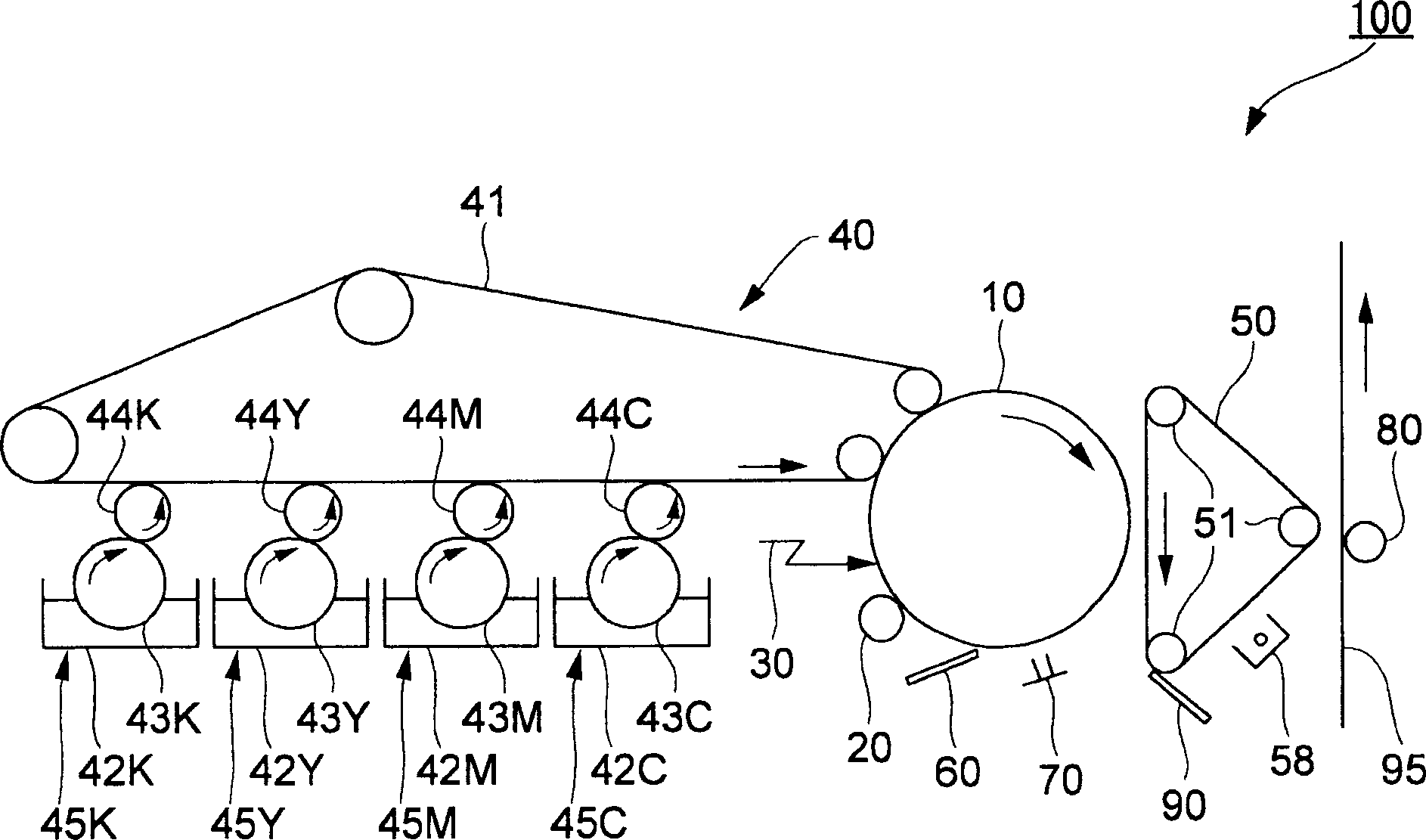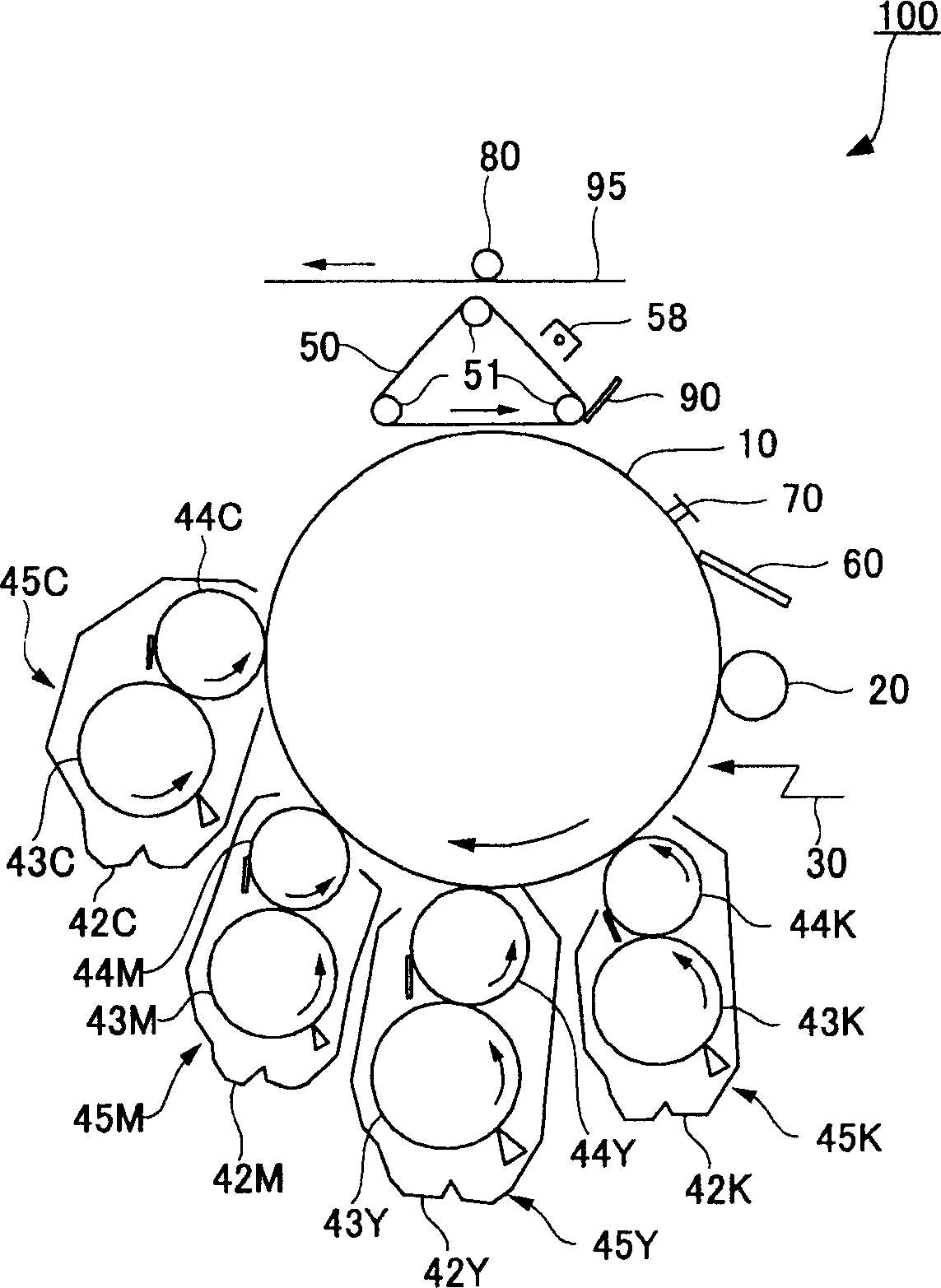Toner, developer, toner container, process cartridge, image forming apparatus and image forming method
A technology of toner and colorant, which is applied in the direction of developer, equipment and instrument of electrical recording process using charge pattern, and can solve the problems of miniaturization, lower yield, acceleration and coloring, etc.
- Summary
- Abstract
- Description
- Claims
- Application Information
AI Technical Summary
Problems solved by technology
Method used
Image
Examples
preparation example Construction
[0119] Preparation of sample: 0.5 g of toner (0.3 g for ethyl acetate soluble component) was added to 120 mL of toluene, and the mixture was stirred at room temperature (23° C.) for 10 hours to dissolve. Also, 30 mL of ethanol was added to prepare a sample solution.
[0120] The acid value can be calculated by the above-mentioned equipment, and the specific calculation procedure is as follows.
[0121] The sample was titrated with a pre-evaluated 10 / N caustic potash ethanol solution, and the acid value was obtained from the consumption rate of the caustic potash ethanol solution as follows:
[0122] Acid value = KOH (in mL) × N × 56.1 / sample mass
[0123] where N is a factor in N / 10KOH.
[0124]
[0125] In a 100 mL volumetric flask, add 0.5 g of accurately weighed sample, to which 5 mL of acetylated sample is appropriately added. Next, the flask was immersed in a heating bath at a temperature of 100±5°C and heated. After 1 to 2 hours, the flask was removed from the heat...
Embodiment 1
[0334] ~Synthesis of resin particle emulsion~
[0335] In a reaction vessel equipped with a stirrer and a thermometer, 683 parts of water, 11 parts of sodium salt of methacrylic acid ethylene oxide adduct sulfate (ELEMINOL RS-30 manufactured by Sanyo Chemical Industries, Ltd.), 83 parts of styrene, 83 parts of methacrylic acid, 110 parts of butyl acrylate and 1 part of ammonium persulfate and stirred at 400 rpm for 15 minutes to obtain a white emulsion. The emulsion was heated until the temperature of the system reached 75°C and reacted for 5 hours. Furthermore, 30 parts of a 1-% aqueous solution of ammonium persulfate was added, and the mixture was aged at 75° C. for 5 hours to obtain a vinyl resin (sodium salt of sulfate ester of ethylene oxide adduct of methacrylic acid-styrene - Aqueous dispersion of methacrylic acid-butyl acrylate copolymer), resin particle dispersion 1. The volume average particle diameter of the resin particle dispersion 1 was measured by a laser diff...
Embodiment 2
[0362] Toner 2 was obtained in the same manner as in Example 1 except that Master Batch 2 prepared as described below was used instead of Master Batch 1 in Example 1.
[0363] ~Pigment treatment~
[0364] In a 10-liter kneader, 500 parts of crude copper phthalocyanine blue having a purity of 95% were introduced together with 2,000 parts of common salt and 550 parts of diethylene glycol. After the mixture was kneaded at 100°C for 4 hours, 25 parts of natural rosin was added to the mixture and further mixed for 30 minutes. The obtained mixture was placed in 10,000 parts of water, and stirred at 80°C until table salt and diethylene glycol were dissolved. After further adding 50 parts of 98-% sulfuric acid and stirring for 1 hour, the mixture was filtered and washed until it became neutral, obtaining a pigment composition in the form of a slurry. This was further dried and pulverized to obtain 490 parts of a pigment composition.
[0365] ~Synthesis of masterbatch~
[0366] In ...
PUM
 Login to View More
Login to View More Abstract
Description
Claims
Application Information
 Login to View More
Login to View More - R&D
- Intellectual Property
- Life Sciences
- Materials
- Tech Scout
- Unparalleled Data Quality
- Higher Quality Content
- 60% Fewer Hallucinations
Browse by: Latest US Patents, China's latest patents, Technical Efficacy Thesaurus, Application Domain, Technology Topic, Popular Technical Reports.
© 2025 PatSnap. All rights reserved.Legal|Privacy policy|Modern Slavery Act Transparency Statement|Sitemap|About US| Contact US: help@patsnap.com



